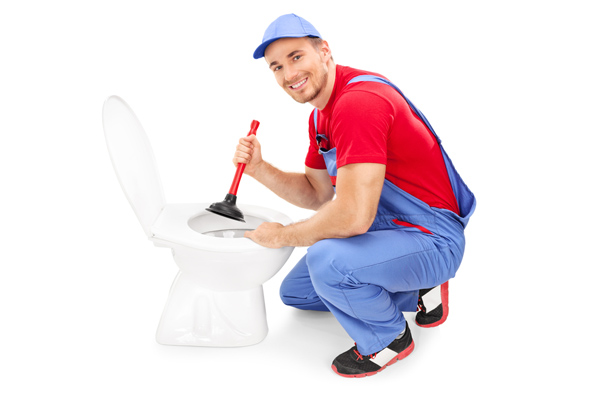Any individual is bound to have their own opinion involving How To Use Your Toilet Plunger Correctly in 5 Easy Steps.

Intro
Appropriate upkeep of household drains pipes is necessary for preventing blockages and ensuring smooth water flow. One of the secret devices in every property owner's toolkit is the plunger, along with different drainpipe cleansers developed to take on stubborn blockages successfully. This article checks out just how to use bettors and drainpipe cleaners effectively to keep your drains moving openly.
Area 1: Understanding Plungers
Types of Plungers
There are several sorts of bettors available, each designed for various sorts of drains and obstructs. The most usual kinds consist of mug plungers, flange bettors, and accordion plungers.
Exactly How Plungers Job
Plungers deal with the concept of creating stress and suction to displace blockages. When properly used over a drain, they create a vacuum cleaner that can pull out particles or break up blockages.
Selecting the Right Bettor
Choosing the right plunger depends on the type of drain and the nature of the blockage. Cup bettors are optimal for sinks and tubs, while flange plungers are better suited for toilets as a result of their layout.
Common Errors with Plungers
Preventing these errors makes sure effective plunging: improper seal around the drain, inadequate pressure, and unclear surrounding debris.
Area 2: Utilizing Plungers Successfully
Prep work
Before diving, ensure the plunger covers the drain totally and forms a limited seal. Clear any type of visible debris around the drainpipe opening.
Method
Start with gentle diving motions to construct suction. Rise pressure gradually, utilizing a stable rhythm. Repeat as needed till the drain gets rid of.
Troubleshooting Tips
If diving doesn't function, attempt adjusting the seal, using petroleum jelly for a much better seal, or using a various sort of plunger.
Section 3: Recognizing Drainpipe Cleaning Company
Types of Drainpipe Cleaning Company
Drain cleaners can be chemical or enzymatic. Chemical cleansers make use of solid chemicals to liquify clogs, while enzymatic cleansers make use of natural enzymes to break down organic matter.
How Drain Cleansers Work
Chemical cleaners respond with obstructions to dissolve them, while chemical cleaners break down organic materials like hair and grease without damaging pipelines.
Safety Considerations
Constantly put on gloves and eye protection when making use of chemical drain cleansers. Make certain ample air flow and follow supplier directions carefully.
Eco-Friendly Alternatives
Think about utilizing vinegar and baking soft drink or enzyme-based cleaners for eco-friendly choices that are much safer for pipes and the setting.
Section 4: Utilizing Drainpipe Cleaning Company Efficiently
Application Methods
Put chemical cleaners directly into the drain opening. Enable them to work for the advised time before flushing with hot water. Enzymatic cleansers must sit over night.
Preventative measures
Stay clear of blending different sorts of cleaners, as this can produce poisonous fumes. Never utilize chemical cleaners in conjunction with a bettor, as splashing can happen.
Taking Care Of Stubborn Obstructions
For consistent obstructions, consider making use of a plumbing serpent or calling a professional plumbing technician to stop damage to pipelines.
Verdict
In conclusion, comprehending just how to use plungers and drainpipe cleaners effectively is essential for keeping healthy pipes systems. By selecting the right tools and techniques, house owners can tackle small clogs and protect against major pipes problems down the line.
4 DIY Ways to Unclog Drains
Wire Hanger
This age-old technique has been used by many an amateur plumber – to much success. Take any wire hanger, deconstruct its shape and leave a small hook shape on the end. Time to go fishing! Remove the shower or sink drain cover and snake the wire into the drain, wiggling and rotating it as you push it through. Dispose of the gunk that you remove and flush the drain with hot water. Rinse with a pan of boiling water for best results.
Plunger
Creating a suction in your drain can break up clogs caused by hair and soap residue build up. First, make sure you are using the correct type of plunger, one specifically for sinks or tubs. They are typically smaller than regular toilet plungers and often have a shallow suction cup. Regular plungers can work too but we’d recommend cleaning them first and finding a way to create better suction over the drain.
Baking Soda and Vinegar
This technique is a classic – and one of the most popular DIY drain unclog methods. Pour one cup of baking soda and one cup of vinegar down the drain and allow it to work its magic overnight. The next morning, flush the drain with boiling water. Repeat if necessary.
Drain Snake/Hair Clog Tool
If you know your clog is caused primary by hair, a drain snake/hair clog tool might be your best option. These tools can be purchased for under $10 at any hardware store and work well so long as the clog isn’t too deep in the drain.
https://www.callcatons.com/blog/four-diy-ways-to-unclog-drains/

As a serious reader on How to Unclog Your Sink with a Plunger, I was thinking sharing that piece of content was appropriate. In case you enjoyed reading our page please be sure to share it. We truly appreciate your readership.
Prices & Booking
 Bradley Pierce Then & Now!
Bradley Pierce Then & Now! Judd Nelson Then & Now!
Judd Nelson Then & Now! Melissa Joan Hart Then & Now!
Melissa Joan Hart Then & Now! Bernadette Peters Then & Now!
Bernadette Peters Then & Now! Pierce Brosnan Then & Now!
Pierce Brosnan Then & Now!